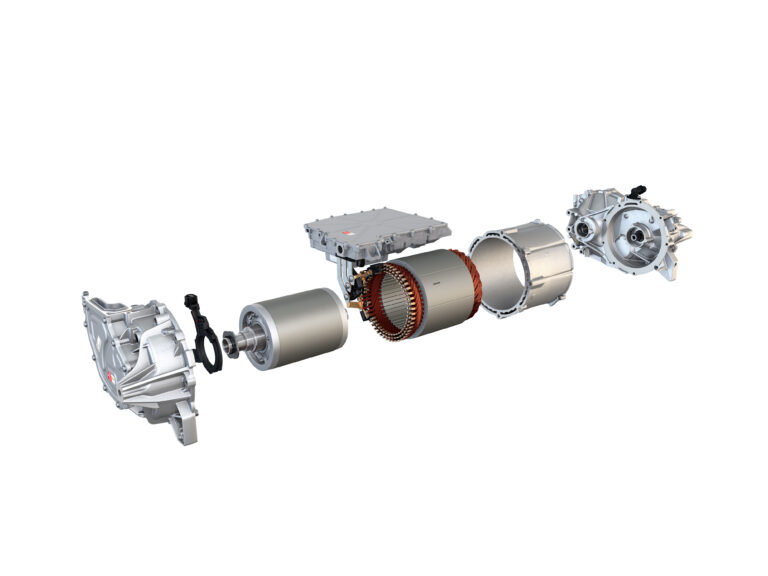Volkswagen’s ID.3 is fitted with an APP 310 permanent magnet brushless electric drive. The designation APP derives from the arrangement of the drive and the gearbox in parallel with the axle, while the numerical sequence that follows derives from the maximum torque of 310Nm.
The main components for this drive are produced at various Volkswagen Group Components production sites. The rotor and stator are both produced at the component plant in Salzgitter, Germany.
New hairpin technology has enabled the use of an innovative production process for the assembly of the stator, whereby the spaces within the laminated core of the stator are optimally filled with flat preformed copper coils. This increases the torque density and the efficiency of the electric drive in comparison to that of a drive with wound copper wire coils.
Maximum torque is achieved even at a low engine speed, which means that a 1-speed gearbox is sufficient for the entire rotational speed range. Both the electric drive and the 1-speed gearbox are produced at the component plant in Kassel, Germany.
The whole drive unit, together with the 1-speed gearbox, is compact enough to fit in a sports bag. The drive weighs only around 90kg (198 lb) and can generate a peak output of up to 204ps in the ID.3.
Inside each electric motor is a stationary stator with a rotor spinning inside it. The stator is made of copper wire coils. When an electric current flows through these coils, a rotating magnetic field is created in the stator, which causes the rotor to spin.
The rotational movement is based on a simple physical principle: opposite poles in a magnet attract each other, whereas like poles repel. The permanent magnet brushless machine features a strong permanent magnet rotor, which rotates in sync with the magnetic field of the stator.
In asynchronous machines, however, the rotor uses the electric current to generate its own magnetic field and, as a result, the rotation of the rotor lags behind the stator’s magnetic field rotation.


